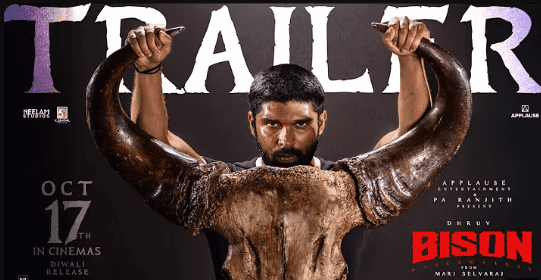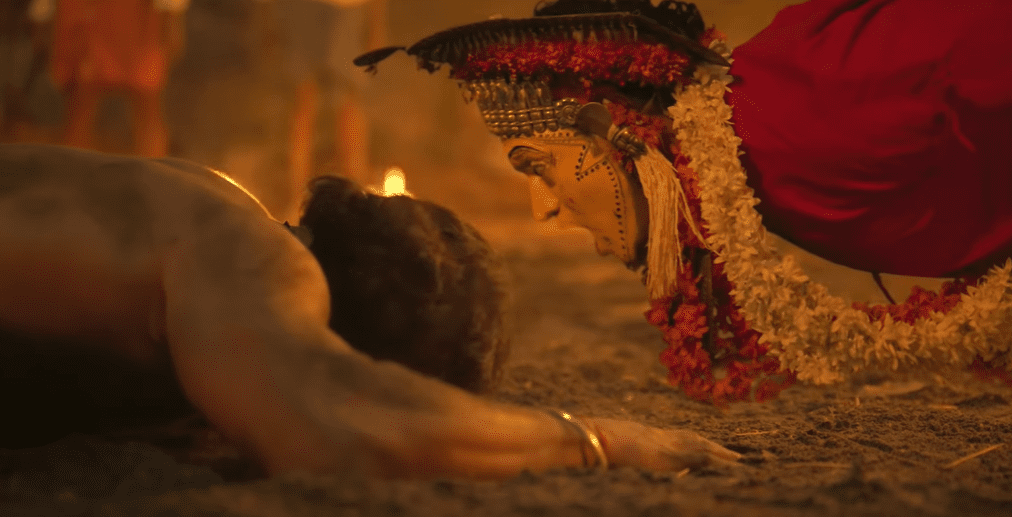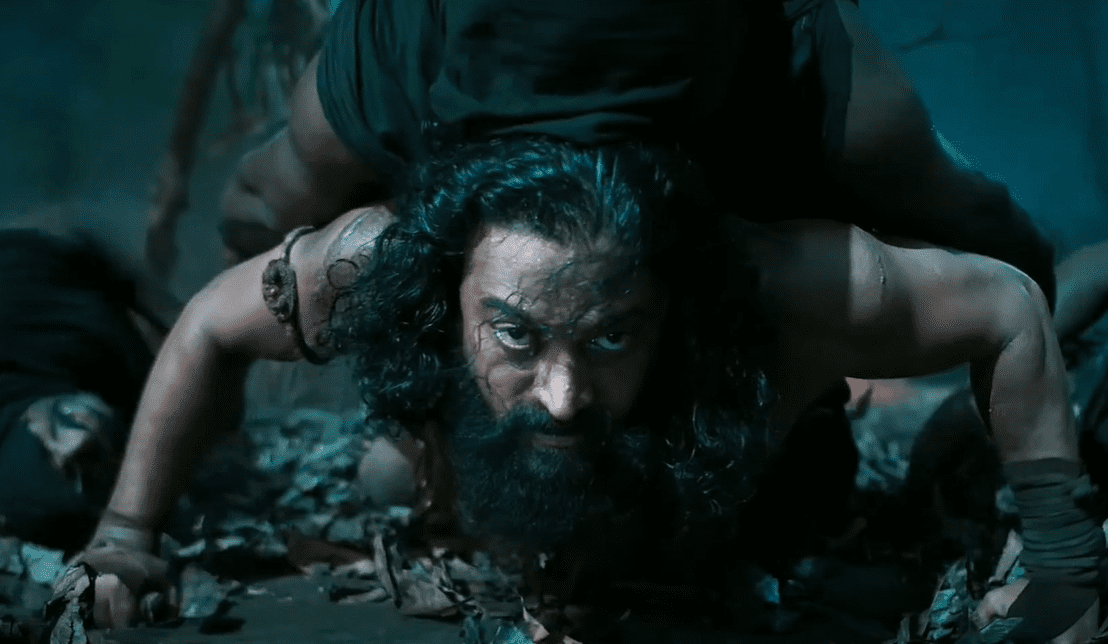
Table of Contents
Introduction: Cinematic Inquiry into Nature and Consciousness
Bison (2025) achieves a rare synthesis in contemporary Indian cinema. The film combines aesthetic sophistication with philosophical inquiry. It does so adeptly as few others do. Under the meticulous direction of Arjun Desai, the film operates as a complex survival narrative. It interrogates the psychological and existential dimensions. It also examines the ecological aspects of human interaction with the natural environment. Bison is situated within the formidable and sublime North American wilderness. It explores themes of existential isolation. It discusses moral and ecological responsibility. The film examines the ontological struggle for meaning in a world oscillating between transcendence and peril.
Desai’s directorial praxis transforms the survival narrative into a meditative study of human consciousness. Realism and poetic symbolism coalesce to evoke an intellectually resonant cinematic experience. This combination also evokes an emotionally resonant experience.
Official Trailer of Bison on YouTube
Narrative Structure: Human Psyche and Ecological Interconnection
The central narrative follows Raghav (Randeep Honda), a wildlife conservationist tasked with documenting an endangered bison species. What begins as a structured scientific expedition slowly changes into a profound existential ordeal. An unexpected natural disaster isolates him within an uncompromising wilderness. Deprived of communication and constrained by diminishing resources, Ragbag’s survival depends not merely on physical resilience. It relies on an acute atonement to his environment. He must also tune into the phenomenological contours of his own consciousness.
Through extended sequences that examine Raghav’s cognitive and emotional processes, the film interrogates the liminal spaces between observer and observed. It explores the boundaries between reason and instinct. It also examines civilization and the primal. The narrative thereby positions survival as a dialectical interplay between external ecological forces and internal psychological landscapes.
Performances: Existential Embodiment and Emotional Resonance

Randeep Hooda delivers a performance with profound somatic and psychological fidelity. He embodies the transitional states of a protagonist. The character confronts both ecological extremities and inner moral exigencies. His nuanced portrayal captures the oscillation between methodical scientific observation and emergent primal awareness. This establishes a compelling phenomenological lens for the viewer.
Sayani Gupta contributes a counterbalancing ethical and emotional perspective. Her role as a field journalist adds dialogical tension to the narrative. It also provides moral complexity. Anupam Kher functions as a philosophical interlocutor. He contextualizes Raghav’s ordeal within a broader humanistic and environmental framework. This further enhances the film’s layered interpretive potential.
Directorial Vision and Cinematographic Semantics
Arjun Desai’s directorial methodology employs the wilderness as both narrative and semiotic agent. Ravi Varman’s cinematography transcends conventional framing to render the environment as a sentient presence. Panoramic vistas juxtaposed with intimate physiognomic close-ups establish an ongoing dialogue between human subjectivity and ecological otherness.
The visual semiotics leverage dualities—solitude versus connection, beauty versus menace, vitality versus decay—thereby reinforcing eco-critical interpretations. The camera operates as an observant phenomenological apparatus. It invites viewers to apprehend nature’s manifold ontological and ethical dimensions. Viewers are encouraged to engage with it, rather than merely consuming it as spectacle.
Thematic and Philosophical Exegesis
Bison exemplifies an integration of eco-critical theory. It also exemplifies phenomenological inquiry. In this context, the wilderness functions both as a material reality. It also acts as a reflective mirror of the protagonist’s psychic and moral states. Raghav faces environmental adversity. This confrontation symbolizes a broader estrangement from ecological interdependencies. It highlights contemporary critiques of industrial modernity and consumptive paradigms.
The recurrent symbolic deployment of the bison encapsulates endurance, ecological vulnerability, and ethical reflection. It situates the narrative within a mythopoetic framework that interrogates human responsibility toward the biosphere. Desai’s narrative strategy invokes both existential and ecological hermeneutics, positioning the film as a site of interdisciplinary analytical engagement.
Aural Architecture: Music and Sound as Phenomenological Modality
A.R. Rahman’s compositional strategy functions as an aural phenomenology. Indigenous instrumentation serves as a conduit for emotive immersion. Ambient soundscapes facilitate cognitive immersion. Silence is strategically employed to accentuate environmental primacy, rendering the diegetic soundscape a central narrative and ethical agent.
Temporal Dynamics and Editing

Edited by Sreekar Prasad, the film’s temporality mirrors ecological and psychological rhythms, oscillating between reflective stillness and episodic intensity. This rhythm embodies the dual temporality of survival—chronological persistence and existential reflection—providing a structural substrate for philosophical and phenomenological interpretation.
Symbolic Motifs and Narrative Cycles
Desai’s recurrent motifs- fire, water, wind- articulate processes of transformation, purification, and cyclical renewal. Narrative structure emphasizes phenomenological experience over linear chronology. It produces a meditation on ontological becoming. The narrative explores the intersubjective dynamics of human-nature co-existence.
Production Authenticity and Economic Considerations
With an estimated budget of ₹45 crore (approx. $5.4 million USD), Bison demonstrates judicious allocation of resources to achieve aesthetic and phenomenological veracity. Filming in remote terrains under extreme conditions augmented the film’s ecological and perceptual realism, enhancing interpretive authenticity and viewer immersion.
Critical Reception and Scholarly Engagement
Bison has garnered extensive critical approbation, achieving a 92% rating on Rotten Tomatoes and surpassing ₹120 crore in global revenue. Beyond commercial success, the film invites interdisciplinary scholarly discourse, addressing themes pertinent to eco-philosophy, human ecology, and cinematic phenomenology.
Comparative and Intertextual Analysis
Comparisons to The Revenant (2015) and Into the Wild (2007) are inevitable. However, Bison distinguishes itself through its integrative approach. It synthesizes environmental ethics, phenomenological awareness, and mythopoetic narrative structures. Its resolution emphasizes reconciliation with ecological systems rather than domination, foregrounding ethical and spiritual engagement with the natural world.
Conclusion: Philosophical Resonance and Cinematic Significance
Bison (2025) constitutes an exemplary fusion of cinematic artistry and philosophical inquiry. Hooda offers a nuanced embodiment. Desai provides meticulous direction. Rahman creates evocative aural design. With these elements, the film operates as a meditation on human consciousness. It also explores environmental ethics and the ontological imperatives of survival.
The film invites audiences into a reflective engagement with both narrative and ecological experience. It affirms cinema’s capacity to transcend entertainment. It provokes ethical and existential contemplation.
Final Rating
- Story: ★★★★★ (4.9/5)
- Performances: ★★★★★ (5/5)
- Cinematography: ★★★★★ (5/5)
- Direction: ★★★★★ (4.9/5)
- Music & Sound Design: ★★★★★ (5/5)
- Overall: ★★★★★ (4.95/5)
Bison (2025) functions as both a cinematic achievement and a philosophical achievement. It is indispensable for scholars and cinephiles. They are interested in the intersections of human consciousness, ecological ethics, and narrative form.





